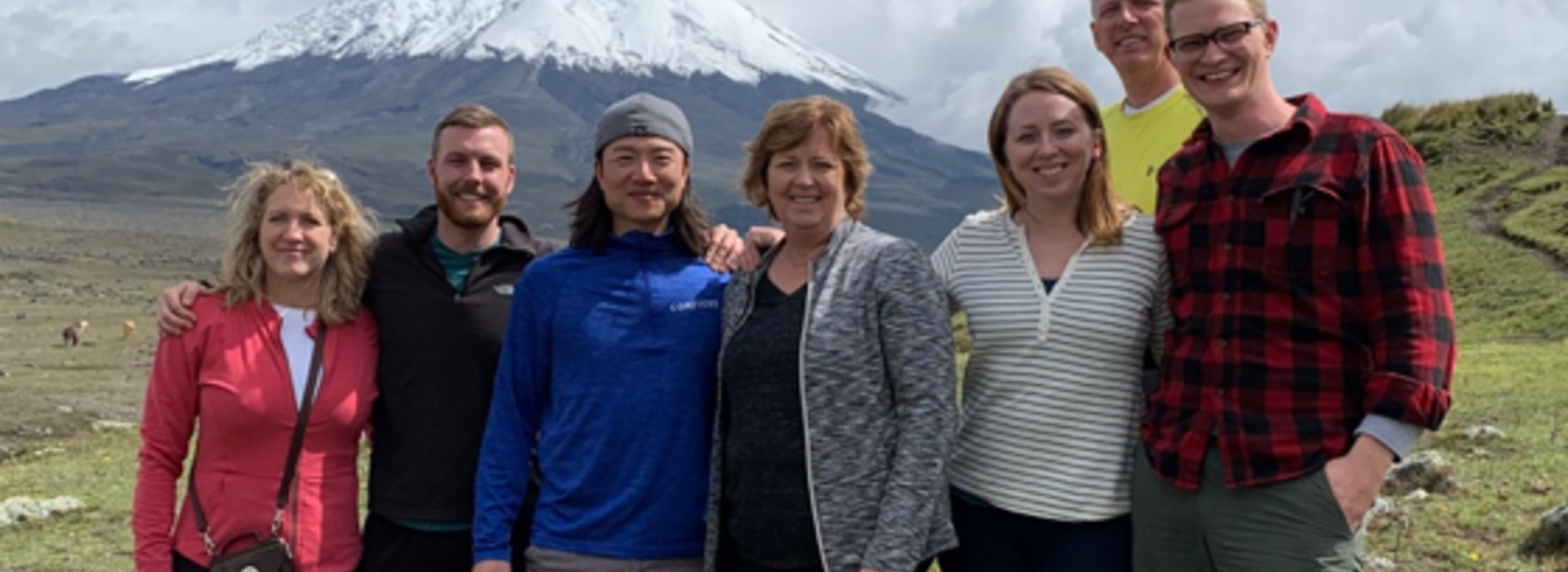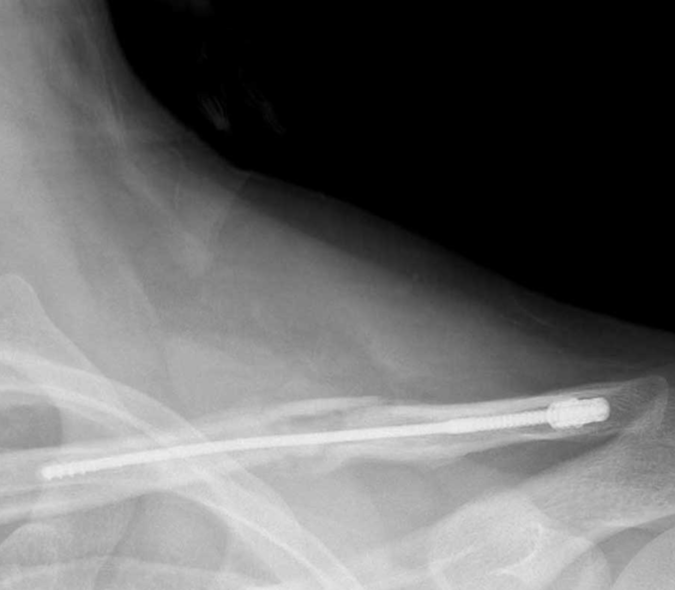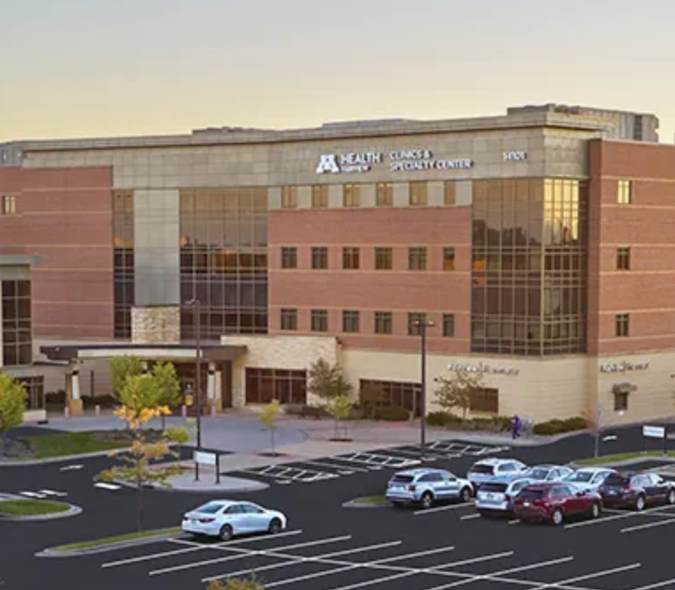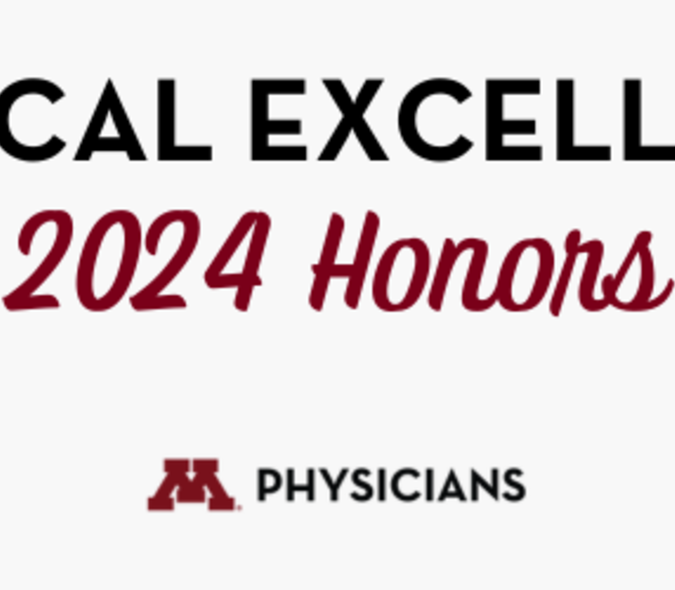
U of M Orthopedic Work Abroad: Making Patients Better One Country at a Time
Physician burnout and wellness have been hot topics in the medical community, and rightly so. Physicians make life or death decisions and are expected to perform with superb precision, all while working grueling hours. What can be done about such a pervasive issue? Clinical Orthopaedics and Related Research presents an interesting option to stave off burnout: providing orthopedic care abroad. The University of Minnesota Department of Orthopedic Surgery has a rich tradition of providing care to those in need – through established programs, resident scholarships, and providing orthopedic equipment and supplies. U of M faculty are dedicated to ensuring excellent outcomes for patients overseas. The tradition dates back to James Gage, MD, retired pediatric orthopedic surgeon at Gillette Children’s Specialty Healthcare. Gage is best known for his seminal work advancing clinical care for patients with cerebral palsy and pioneering the use of 3D clinical gait analysis. In 1996, Gage heard about the medical needs of Hospital VozAndes in Quito, Ecuador.
“We thought we were going down on holiday for a couple of weeks to look at the situation, and I ended up doing around 12 surgeries,” Gage recalls. While there, he met Eckehart Wolff, MD, a general surgeon and German missionary who has lived in Ecuador for a significant portion of his career. Wolff had become the de facto surgeon for the poor, because he was the only surgeon willing to provide orthopedic care for free. When Wolff learned that Gage was a pediatric orthopedist, he began setting aside complex cases, especially those involving cerebral palsy, for Gage to evaluate when he returned.
“Usually I would stay for three weeks,” Gage explained. “We would run a clinic once a week and operate the rest of the days. If we didn’t finish the list of patients, I would try to make a second trip back to Ecuador that same year.” While doctors in Ecuador take exceptional care of their patients, complex reconstructive surgeries require years of experience and education, which the team from Gillette can provide. “If Dr. Wolff feels like his patient would benefit from lower extremity corrective surgery, he will have them come back in March to be seen by our group,” explained Tom Novacheck, MD, professor and orthopedic surgeon at Gillette. Novacheck has been traveling to Ecuador to provide orthopedic care for the last 11 years and says that Gage’s mentorship was his inspiration. “Without that mentorship I don’t know that I would have gone as soon as I did,” Novacheck said.
The surgeons stay a week in Ecuador, working in teams. When their week is up, they are replaced with the next group of physicians. The surgeons will typically see about 50 patients in clinic on Friday, and then perform surgeries from Monday-Thursday. All and all, there is a Minnesota orthopedic presence for up to three weeks. “Generally, we are performing pretty big surgeries, so we usually do two to three per day,” Novacheck explained. “We perform surgery on about ten patients each week.” Physicians in Ecuador face unique challenges rarely encountered in the U.S. “In many areas, organized healthcare is generally not available,” Novacheck said. “You end up seeing conditions that have gone untreated for an extended time.”
Not all patients in the U.S. are accessing care at the ideal time either, so cases seen in Ecuador helped the team gain knowledge around late-stage issues. “In the U.S., we typically have an early intervention when an orthopedic disease is detected, and we have the ability to monitor the child over time,” explained Michael Healy, MD, assistant professor and orthopedic surgeon at Gillette. “We are able to do an intervention or surgical procedure when it’s the appropriate time; whereas, in Ecuador, sometimes we wish we would have seen a child much sooner.” With time, they hope that they can help move the standard of care in the right direction, allowing earlier diagnosis and more timely treatment. “The good news is, we are getting more kids at a younger age so that we can do some of the reconstructive procedures,” Healy said. “We started to do more complex procedures there as our confidence in the hospital’s ability to care for them postoperatively has grown.”
Physicians in Ecuador are often forced to innovate as some clinical resources are scarce. For example, physicians in the U.S. can do gait analysis and monitor patient progression over time. Teams are trained in global tone management with selective dorsal rhizotomy or intrathecal baclofen pumps and focal management with Botox or Phenol. And there is always the security of knowing that supplies will show up when they are needed. “Down there, we work with what we’ve got,” Healy said. “We’ve been fortunate enough to bring a fair amount of equipment with us over time.” This year, the group is transporting technology to capture electronic medical records. Previously, medical records were kept on paper and patients would come in carrying x-ray films that were often undated. It was difficult to determine when the x-rays had been taken, let alone finding old operative reports and records. “This year we’re implementing an electronic medical record system that’s designed just for mission work,” said Walter Truong, MD, assistant professor and orthopedic surgeon at Gillette. Peter Cole, MD, professor and chair of orthopedics at Regions Hospital, was the first to use the new equipment. The team has also added a camera that will allow them to document gait changes after intervention, which will then help determine how to proceed over time.
While providing complex orthopedic care is critical, the Gillette team has emphasized the importance of teaching new skills and passing on knowledge. Since Gillette’s gait lab was about ten years ahead of its time when it was built in 1987, Gage received invitations from around the world to speak about its capabilities. While in South America, he was approached by many physicians who wanted to operate with him in the United States; however, strict laws would prohibit those surgeons from touching patients. Instead, Gage invited them to join him during his visits to Quito, so they could share the operating table and he could make use of their Spanish. “There was a lot of learning between the two groups, and we got to be very collegial,” Gage said. Orthopedists from Brazil, Chile, Colombia, Ecuador, and Venezuela have been taking advantage of the opportunity to work side-by-side with the Gillette group for more than a decade.
“Working with them over the last 11 years, I know that they have evolved and developed their practice in their own countries,” Novacheck said. “Not only is the program helping surgeons and patients in Ecuador, but it really has had a larger impact across South America.” Healy, who has been making the trip to Ecuador for more than ten years, says that the local surgeons have made great strides and are eager to spread the knowledge they have gained in their practices across the continent. “It’s a full-circle teaching and learning opportunity with our colleagues in South America,” he added.
Sometimes, overseas work is criticized because of the perception that physicians visit and perform surgery, then leave without a designated individual equipped to care for the patient postoperatively. “We’ve never had to worry about that because Dr. Wolff has an established relationship with the patients,” Novacheck noted. “We have confidence knowing that he is equipped to provide ongoing care after the surgeries are done.” Some procedures, particularly those that involve the spine, are simply not possible with the resources at the Hospital VozAndes. Instead of leaving patients without alternatives, the orthopedists at Gillette brought several children to the U.S. for complex surgeries that would otherwise be inaccessible. “There was a child that we saw for a number of years who really needed a selective dorsal rhizotomy,” Healy said. “We were lucky enough to bring him to Gillette for the surgery. He stayed in the inpatient rehab for the typical six weeks and we’ve seen him back on a few more occasions.” Healy added that because of improving technology and the ability to communicate with the Hospital VozAndes, they were able to manage the case as if he were a Twin Cities resident. “He’s very appreciative and still wears his Twins hat for every follow-up visit,” Healy said.
In another instance, an 18-month-old child named Ivan Sisa was run over by a car. As a result of that injury, he suffered spinal trauma that left him paraplegic. Getting Ivan to Minnesota, however, was arduous. Gage and Steven Koop, MD, associate professor and former medical director of Gillette, worked with American Airlines, who generously funded the journey and secured housing for the three-month stay. During this time, two major surgeries were performed by Gage and Koop. The first was a spinal fusion; the second a major reconstruction of both lower extremities, restoring Ivan’s ability to be upright and stable with the assistance of forearm crutches. After his surgery, Ivan went on to medical school and aspired to work as a pediatric orthopedic surgeon. However, because this surgical specialty requires standing for very long hours, he opted to continue his medical career as a physician-scientist. In order to do that, he obtained one master’s in public health at the Universidad San Francisco de Quito (USFQ), Ecuador, and another in clinical research and translational science from Tufts University in Massachusetts. He is currently on the teaching faculty in the School of Medicine at USFQ and serves as their IRB chair. He has published multiple articles in scientific journals about population health in Ecuador.
“The opportunity to serve any child is a blessing, no matter where they live,” Koop said. “Serving children in Ecuador, where the need is so great, reminds me that I am very lucky to live in Minnesota where I have so many resources to help our young patients.” Gage’s legacy of service in Ecuador has spanned more than 20 years, with many U of M medical students, residents, and physicians participating in the annual journey. Gage provided care in the Hospital VozAndes for 18 consecutive years, sometimes returning two to three times annually. “The legacy has lived on because the group of pediatric orthopedists at Gillette are very close, and we are not only partners, but friends,” Gage said.
Through the department’s International Education Scholarship, residents have the opportunity to provide care abroad. Since 2006, 11 residents from the Department of Orthopedic Surgery have served with the Gillette team in Ecuador. This is funded through philanthropic generosity and continued support by faculty and alumni. The International Service Fund was initially set up using a gift from Gordon Aamoth, MD, and his wife to support international travel and promote orthopedic surgery, education, and training. Because of the popularity and success of the program, the Dr. Paul C. and Jodi McRae Matson Endowment was generously established in 2016 to create an international training program within the Department of Orthopedic Surgery. This endowment has solidified the longevity of this rich learning experience for residents. “The educational opportunity we’re able to offer our residents who want to go overseas is powerful,” Novacheck said.
Overall, the International Education Scholarship has supported 30 residents volunteering abroad in underserved areas. Residents have provided care in Costa Rica, Ecuador, Honduras, Kenya, Nepal, Norway, Peru, and St. Lucia. Healy had the opportunity to go to Ecuador as a medical student. While he was doing a rotation at Gillette, he says that Gage frequently talked about his work overseas. “At one point I said: ‘I’d love to go,’” Healy remarked. “Gage replied: ‘Do you want to go this year?’” Gage generously paid for Healy to join the group that year. As a pediatric orthopedic fellow at the University of Minnesota and Gillette, Healy was also a recipient of the International Education Scholarship.
“It was great to go at a time when I probably couldn’t have afforded it on my own,” Healy said. “I’ve been able to go every year since then.”
Scalpel At The Cross Makes a Difference in Peru
Peter Cole, MD, observed the same orthopedic needs in Peru, where he first visited in 1990. While Cole was in medical school, a young missionary couple from Peru moved into his apartment building, and a friendship instantly blossomed. The couple lived nearby for only three months but kept in close contact with Cole and his wife, Nancy. “He was a bush pilot, and I was a budding doctor getting ready to go into residency,” Cole recalls. “We started brainstorming ways to merge our professions someday.” The original idea was to purchase a property that would be large enough to accommodate guests that had a desire to work in the hospital with Cole. He visited Peru about six times over an eight-year period, and finally the circumstances were right to buy property. “It started modestly,” Cole said. “As we took more trips, more colleagues wanted to go, and more people wanted to get involved.”
Fast forward to 2004, and the Coles established a non-profit organization called Scalpel At The Cross that has paid staff in both the United States and Peru. Since 2006, six residents from the department have accompanied the Coles on their mission trips. Some have remained active in international orthopedic work. One of the residents, Jason Caron, MD, is now on the board of directors and has led about ten trips independently. “He’s a formidable leader in our mission,” Cole added. Scalpel At The Cross partners with two hospitals in Pucallpa, Peru, a sprawling city with a population of about 350,000. They work out of one of two government hospitals, the Hospital Regional de Pucallpa, and Hospital Amazonico. “We treat the Pucallpan Peruvians, the native Indian populations of the Amazon jungle, and the missionaries who serve them,” Cole explained. “Each one of those is significant.”
The Scalpel At The Cross organizes 10 to 14-day trips with 10-20 people at a time. Typically, this includes 3-4 surgeons, 2-3 trainees, and several allied health professionals such as nurses or PAs. The rest of the team are non-clinical. They then have a large clinic and see about 100 patients, selecting those they feel could be helped by an operation. Typically, this comes to 20-25 people. “The operations we do are very substantial,” Cole said. “We typically treat nonunions, malunions, bone deformity, bone infection, or broken bones.” Scalpel At The Cross makes an average of three trips to Peru annually, which has an enormous impact. If a patient in Peru breaks their tibia or femur, for example, and there is no orthopedist around to treat it, patients may remain bedridden until it heals. If it does not heal properly, the patient could end up with a flail leg or an extremely crooked leg. “If you have a family, you may lose your family because it’s difficult to hold a job,” Cole said. “These people end up being marginalized in society. They may go from having a job to a very desperate living situation because of limited mobility.”
Cole says there are countless stories of patients who were crippled for years, and after a bone reconstruction, have been able to live a completely normal, fulfilling life. “It’s life-changing work,” Cole expressed. “It’s not like the Twin Cities where if you don’t like your orthopedic surgeon, you’ll go down the street to the next orthopedic surgeon.” While in Peru, he and his colleagues push themselves to work outside of their normal comfort zone. For example, a four-year-old girl presented with a severe case of clubfoot, which had resulted in complete immobility. Although Caron and Cole already had a full surgical schedule, they realized they were perhaps her only chance to walk again. Caron recalls that in the U.S., a pediatric orthopedic surgeon would be the subspecialist treating clubfoot, and he was apprehensive since it was a surgery outside of his subspecialty.
“It came down to whether I could do it safely and effectively and leave her with a better, less painful foot to walk on,” Caron wrote. “I believed I could.” Ultimately, Caron was pleased with the correction, and the family was grateful for his help. Across the board, orthopedists volunteering in Peru have to stray from their subspecialty. For example, Cole draws on his remote background to perform surgeries to correct congenital foot and clubfoot deformities, as well as treat hand conditions. In the U.S., a trauma surgeon such as Cole would refer patients to a subspecialist in the respective area, but this is not an option in Peru.
“I think it has helped to make me a better, more creative, and more resourceful surgeon,” he said. “You have to function in a situation with substandard conditions, equipment, and limited options for fixation. However, it gives me better surgical judgment and a better understanding of the natural history of disease.” Nowadays, the Scalpel At The Cross’ 25-acre campus includes a guest lodge, warehouse, apartment, and meeting hall. The facilities are connected by 300 meters of boardwalk that traverses the jungle. They have hired staff to follow patients through therapy and monitor wounds. They also built the electronic medical record (EMR) customized specifically for mission work. The original EMR product, named CrossCare, was created using a grant from the AO Foundation. As mentioned earlier, CrossCare is making an impact outside of Peru, andis now being used in Gillette’s work in Ecuador.
“Patient outcomes of our mission orthopedic work is absolutely paramount—without it, we are not serving responsibly,” Cole said. “To fulfill our obligation as physicians, we must know our outcomes—especially in the developing world.”
Haitian Earthquake Spurs Orthopedist to Action
The Gillette and Regions surgeons are not the only U of M faculty members that have made overseas work a part of their practice. Professor Marc Swiontkowski, MD, has been traveling to Haiti to provide care since the 2010 earthquake devastated the country. In the aftermath, Swiontkowski lived on a ship off the coast for three-and-a-half weeks. During that time, the aid team he was a part of performed nearly 800 surgeries. He has been going twice a year since then. “I’ve watched some of these Haitian physicians go all the way through their training and now they’re attendings,” Swiontkowski said. “They are trying to change the way care is delivered in that country and are making slow but steady progress.”
Swiontkowski also emphasized the importance of teaching while abroad. He typically stays in Haiti for three weeks bi-annually and devotes his time to teaching in the ORs, giving lectures, helping with research, and honing surgical skills. “I never do procedures by myself; I have the residents or attendings get the experience,” he added. “It doesn’t do much good if some surgeon comes from the United States, does a bunch of surgeries, and leaves the patients with no clear follow-up.” Swiontkowski explained that consistency and relationship building are key aspects of orthopedic service abroad, and are sometimes overlooked. He believes that focusing efforts on one location and returning regularly makes the biggest impact. Physicians in Haiti also face dilemmas concerning supplies and resources needed to do their jobs. “You may be stuck because the anesthesiologist doesn’t have any drugs for the spinal, or they don’t have any spinal needles. Supplies are a huge issue,” Swiontkowski said. “I’ve been down there when backup generators don’t work, so you have no assurance that you will have electricity to complete the case; therefore, you don’t start the procedure. It’s a different environment.”
Still, doctors in Haiti find ways to innovate and provide the best care possible with the resources they have. “People are smart and creative, and they find solutions to solve problems,” he said. Swiontkowski brings implants and intramedullary nails through the Surgical Implant Generation Network (SIGN) Fracture Care International Program, which helps resupply the island’s two teaching hospitals – the University Hospital Haiti and University Hospital LaPaix. He brings rods for all seven of Haiti’s programs, and his local contacts help distribute them to hospitals that he doesn’t visit. So far, with the assistance of SIGN, he has given away almost 350,000 implants. The physicians in Haiti are required to provide follow-up x-rays from the procedure and explain their future treatment plan, ensuring the best possible care for patients. When they provide the follow-up, they are given the next implant.
“Arrogance has no place in this kind of endeavor,” Swiontkowski emphasized. “If you can’t be humble and understand that the physicians are really smart and doing the best that they can in the environment in which they are forced to practice, just stay home.”
Physician Assistant Finds U of M Partnership in Tanzania
Russ McGill, an orthopedic physician assistant at the University of Minnesota Medical Center, has provided care in Bhutan, Afghanistan, and Tanzania, which he has been visiting annually since 2004, alongside David Palmer, MD, an orthopedic surgeon at Twin Cities Orthopedics. They stay for two weeks and typically work out of the Selian Lutheran Hospital in Arusha and more recently, the Arusha Lutheran Medical Center. The CEO and missionary doctor of the Arusha Lutheran Medical Center, Mark Jacobson, MD, grew up in Stillwater, MN, and was a graduate of the University of Minnesota Medical School. They heard about the program through him. “The place has really progressed a lot,” he said. “They have two trained orthopedic surgeons now, so we have a good relationship built with the medical community there.”
Although significant progress has been made over the last 15 years, one study in the World Journal of Surgery estimated that a mere 3-10 percent of Tanzanians have access to timely, safe, and affordable orthopedic care. Thankfully, now that the Arusha Lutheran Medical Center has two dedicated orthopedists, the trips are more focused on teaching the new surgeons and the general surgery residents who rotate at the hospital. “We used to see 180 people waiting in the clinic the first day and would work through it despite long hours, but now it’s pretty organized,” McGill added. McGill and Palmer have been bringing and shipping equipment over the years, which has allowed the hospital to perform arthroscopies. They also partner with an organization called the Plaster House, which provides a safe place for children to stay pre and postoperatively. This ensures that children from remote areas have follow-up care for as long as needed. “They built this facility so that they would have a place for the kids to go while their treatment is ongoing,” he explained.
Another unique issue faced by physicians in Tanzania is a condition called skeletal fluorosis, which occurs in some individuals because of excessive fluoride in the water. The condition causes painful bending of the bones and is uncommon in the U.S. “You have to be patient. Things aren’t quite the way they are here, so you have to be understanding,” McGill said. “Most of the time, they don’t have the same equipment, so you have to be a little bit innovative.”
As far as the benefits of providing orthopedic care abroad go, the physicians agree that it creates a positive and lasting impact.
“Getting the focus off yourself is always helpful,” Swiotkowski noted. “I complain a lot less.”
It has also helped them put things into perspective.
“As a new person doing it, it was life-changing,” Dr. Walter Truong said. This year was his second time visiting and he anticipates that it won’t be his last.
Gage added that the real reward is helping those who normally would not have had access to care.
“After walking out of the OR and talking to the children’s parents, the phrase you would often hear was ‘Que Dios le pague;’ which means may God repay you,” Gage said. “The most important part of the work is giving people a little better life than they would have had otherwise.”



